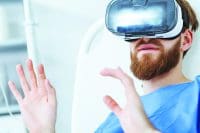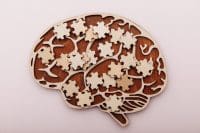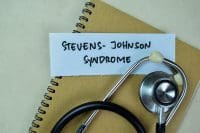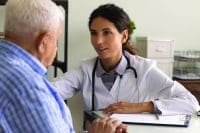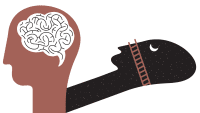Implement healthy behaviors to treat, prevent, and potentially reverse chronic disease.
- Lifestyle medicine addresses the root causes of chronic diseases.
- Nurses are well positioned to encourage therapeutic lifestyle interventions.
Most nurses enter the workforce with a passion to help people live their healthiest lives. With empathy and compassion, we serve on the frontlines of healthcare, building meaningful relationships with patients and helping them improve their health.
Unfortunately, many in the United States are growing sicker. According to the Centers for Disease Control and Prevention (CDC), six in 10 Americans have at least one chronic disease and four in 10 have two. Chronic disease, the leading cause of death and disability, serves as a primary driver of the $4.1 trillion spent annually on healthcare. The CDC also notes that one in five adolescents and one in four young adults has prediabetes. It’s understandable if some nurses, already exhausted by a global pandemic, are searching for a renewed sense of purpose.
Getting comfortable with carbohydrate counting
Caring for adult patients with obesity in primary care
Lifestyle medicine (LM) may serve as a source of inspiration. This evidence-based medical specialty applies therapeutic lifestyle interventions as a primary modality to treat chronic conditions such as cardiovascular diseases, type 2 diabetes, and obesity. LM addresses the root causes of disease with the clinical outcome goal of health restoration, according to the American College of Lifestyle Medicine (ACLM), the organization that educates, equips, and supports the certification of nurses, physicians, and other clinicians in the specialty.
Health promotion has always been central to nursing, and nurses are well-positioned to implement LM strategies. According to Esselstyn’s and Rosenfeld’s teams, sufficiently dosed therapeutic lifestyle interventions can prevent, treat, and potentially reverse many chronic diseases. Witnessing patients becoming healthy can reinvigorate nurses’ passion as true healers and remind them why they chose nursing as a profession.
What is lifestyle medicine?
LM isn’t alternative medicine; it’s foundational to all healthcare. It has roots in the age of Hippocrates, who advocated the healing power of diet and physical activity and their impact on whole health. Many healthcare guidelines for noncommunicable chronic diseases include lifestyle change as a first step. (See Healthy lifestyle guidelines.)
Healthy lifestyle guidelines
Several chronic disease organizations support healthy lifestyle behaviors in the treatment and prevention of various chronic diseases, including the following:
American Diabetes Association
American Heart Association
American Stroke Association
Centers for Disease Control and Prevention
National Institute of Diabetes and Digestive and Kidney Diseases
National Kidney Foundation
World Cancer Research Fund/American Institute for Cancer Research
According to the World Health Organization (WHO), cardiovascular diseases, cancers, respiratory diseases, and diabetes account for more than 80% of all premature deaths. Genetics can predispose people to develop chronic diseases, but that doesn’t mean they’re helplessly destined to develop diseases that “run in the family.” According to Lin and colleagues, lifestyle and environment also impact disease occurrence. In fact, the WHO estimates that 30% to 50% of all cancers are preventable and related to controllable risks such as physical inactivity, diet, obesity, and exposure to tobacco, environmental pollution, and infections.
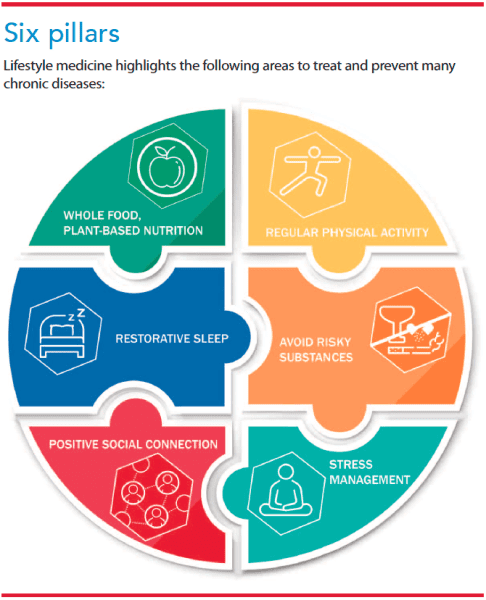 LM consists of six pillars: a whole food, plant-predominant eating pattern; physical activity; restorative sleep; stress management; avoidance of risky substances; and positive social connections. Rather than simply managing disease symptoms through ever-increasing quantities of pharmaceuticals and invasive and expensive procedures, LM first leverages health behavior changes in these key areas to treat the underlying causes of chronic disease. (See Six pillars.)
LM consists of six pillars: a whole food, plant-predominant eating pattern; physical activity; restorative sleep; stress management; avoidance of risky substances; and positive social connections. Rather than simply managing disease symptoms through ever-increasing quantities of pharmaceuticals and invasive and expensive procedures, LM first leverages health behavior changes in these key areas to treat the underlying causes of chronic disease. (See Six pillars.)
Clinicians can demonstrate LM knowledge and skill by earning certification through ACLM, which reports that LM approach can result in improved patient and provider satisfaction. This aligns with the Institute for Healthcare Improvement Quintuple Aim of better health outcomes, lower costs, improved patient satisfaction, enhanced provider well-being, and advanced health equity.
Lifestyle medicine education
Many opportunities exist to add more LM education to undergraduate and graduate nursing curriculums. The same content also must be readily available to all practicing nurses and advance-practice RNs.
Consider, for example, nutrition. The Institute of Health Metrics and Evaluation 2019 Global Burden of Disease Report, which analyzed data from almost 200 countries, found that what people eat (and fail to eat) is the leading cause of disease and death. Frontline nurses can have an influence, either directly or indirectly, on food access and choices, which can result in the consumption of higher-nutrient foods. Although no identified studies have quantified the amount of time nursing students spend learning about nutrition in undergraduate and graduate programs, a systematic review by Crowley and colleagues found that medical school education doesn’t sufficiently incorporate nutrition. More research on this topic related to nursing education is needed, but in the meantime, individual programs can identify their own nutrition educational gaps and begin to fill them with quality LM content.
Lifestyle medicine and chronic disease treatment
In addition to preventing and treating noncommunicable chronic disease, LM provides the opportunity to move disease into remission. Establishing a base of knowledge in whole food, predominately plant-based nutrition via nursing school education would benefit future nurses and their patients. LM pioneers and researchers such as Esselstyn, Remde, Uusitupa, and their colleagues have demonstrated many instances of the prevention, treatment, and reversal of lifestyle-related chronic diseases.
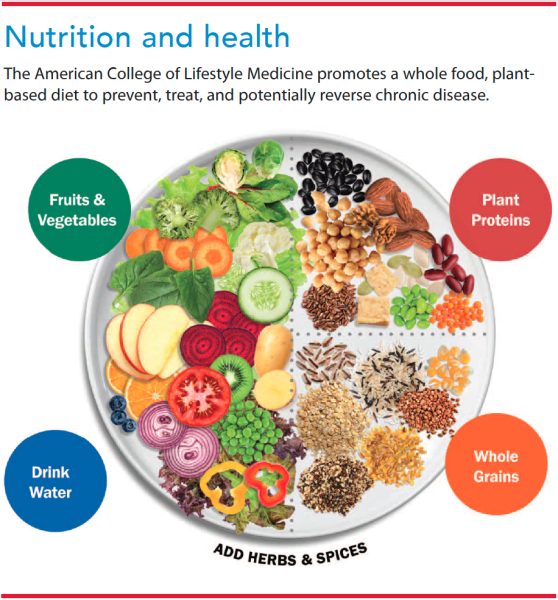 Diabetes, the seventh leading cause of death in the United States, presents an example of the power of LM within nursing. In 2017, the American Diabetes Association reported that the annual cost of diagnosed diabetes was $327 billion, including $237 billion in direct medical costs and about $90 billion in decreased productivity. A 2022 ACLM consensus statement authored by Rosenfeld and colleagues, endorsed by the American Association of Clinical Endocrinology, supported by the Academy of Nutrition and Dietetics, and co-sponsored by the Endocrine Society found agreement that a predominantly whole food plant-based diet alone can achieve remission in individuals with type 2 diabetes. It was the first publication to focus on diet as the primary means to achieve remission rather than as an adjunctive treatment.
Diabetes, the seventh leading cause of death in the United States, presents an example of the power of LM within nursing. In 2017, the American Diabetes Association reported that the annual cost of diagnosed diabetes was $327 billion, including $237 billion in direct medical costs and about $90 billion in decreased productivity. A 2022 ACLM consensus statement authored by Rosenfeld and colleagues, endorsed by the American Association of Clinical Endocrinology, supported by the Academy of Nutrition and Dietetics, and co-sponsored by the Endocrine Society found agreement that a predominantly whole food plant-based diet alone can achieve remission in individuals with type 2 diabetes. It was the first publication to focus on diet as the primary means to achieve remission rather than as an adjunctive treatment.
The evidence that diet alone can achieve remission serves as a powerful message. However, such a dietary intervention goes far beyond telling a patient to eat more vegetables or count their carbohydrate intake. It must be sufficiently dosed and supported by a clinician with the expertise to do it appropriately and effectively. For example, several food options can help mitigate the risk of vitamin and mineral deficiencies; however, according to Melina and colleagues, B12 supplementation may be required and collaboration with a registered dietitian nutritionist (with adequate knowledge and resources for implementing plant-based dietary patterns) may prove beneficial. Providing nurses with LM education, tools, and resources could help make a difference in the incidence, prevalence, and severity of many chronic diseases as well as lower healthcare costs and improve outcomes. (See Nutrition and health.)
The growing role of nurses
The nation’s more than 5 million nurses are well-positioned to make a tremendous difference in the health of Americans. They already spend much of their time educating patients about treatments and medications. Working on the frontline of healthcare in schools, homes, clinics, hospitals, industry, and beyond provides them with the opportunity to lead and implement lifestyle changes.
At the hospital bedside, they can help patients choose nutritious meals from a cafeteria menu and communicate the health benefits. Home health nurses can monitor food intake and recommend dietary improvements. They also can suggest safe and effective physical activities and provide guidance on improved sleep routines. School nurses can advocate for improved food policies in cafeterias, healthy snacks, and physical activities outside the classroom. Nurses can guide patients toward resources for substance use disorder and social support organizations for those who feel isolated.
As part of their daily work, nurses build trusting and judgment-free relationships with patients. They learn about patients’ lives, families, jobs, homes, transportation needs, access to grocery stores, and many other social determinants of health that require consideration when implementing LM intervention. (See Nurses and healthy lifestyle behaviors.)
Nurses and healthy lifestyle behaviors
Nurses also can benefit from lifestyle medicine. For example, adequate sleep duration and quality play an important role in overall health; however, according to Huang and colleagues, many nurses, especially those working night shifts, find this challenging. In addition, according to the Healthy Nurse, Healthy Nation 2020–2021 report, nurses surveyed during the COVID-19 pandemic reported increased anxiety and instances of depression disorder. More than a third of nurses reported feeling “sad, down or depressed” for 2 weeks or more.
Evidence reported by Agarwal and colleagues suggests that eating a plant-based diet can help reduce anxiety, depression, and fatigue, as well as increase emotional well-being and daily function. This improvement of mental health and wellness could positively impact the nursing profession by enhancing nurses’ quality of life, increasing job satisfaction, and reducing burnout.
Leaders in a growing field
Nurses who embrace the LM pillars position themselves as leaders in a growing field. As more healthcare professionals recognize unsustainability of the current trajectory of chronic disease and associated healthcare costs, the transition from a fee-for-service healthcare system to one based on high value offers even more opportunity to implement therapeutic lifestyle interventions within nursing care.
In New York City, Mayor Eric Adams, who has a compelling personal story about the transformational impact of LM, leads an initiative to expand access to LM at public health sites across the city. In addition, undergraduate and graduate students at New York University now have the opportunity to take elective courses in LM.
Health systems recognize the cost-saving potential of LM and place value on clinicians certified in this growing specialty. Since certification began in 2017, more than 5,000 physicians and other health professionals—more than 370 of them nurses—have earned LM certification. Nursing school faculty and students acknowledge the value of LM interest groups and courses. As a result, many universities offer multidisciplinary LM student interest groups, which provide nursing students with an opportunity to interact with other interested health professionals.
Merlo and Berra, in their book Lifestyle Nursing, offer a framework for introducing the concepts of LM into nursing. Creative approaches to learning LM include culinary medicine, physical activity courses, food as medicine and food bank programs, and lifestyle coaching during clinical encounters. According to Downes and colleagues, nurse practitioners leading interprofessional teams have found efficacy in providing nutrition lifestyle interventions in various settings.
How to get involved
Many educational opportunities exist for nurses interested in learning more about LM. ACLM, which represents 10,000 physician and other health professional members, provides content to the American Medical Association’s online continuing education platform and offers a catalog of continuing education courses, including an introduction to LM and courses focused on each of the six pillars.
In September 2022, the White House Conference on Hunger, Nutrition, and Health highlighted a $22 million commitment by ACLM to provide 5.5 hours of complimentary continuing medical education coursework in nutrition and food as medicine to 100,000 medical professionals. The free Lifestyle Medicine and Food as Medicine Essentials bundle is available at lifestylemedicine.org/whconference.
ACLM sponsors lifestyle medicine interest groups, which include nurse members, and one specifically for RNs and APRNs. Interest groups bring together like-minded clinicians to share ideas and best practices for integrating LM into the workplace, educational institutions, and community. Complimentary handouts feature LM information QR codes where nurses can access additional resources via their smartphones.
Nurses can spread LM awareness in their workplaces and communities. Forks Over Knives, a film about the evidence supporting a whole food, predominantly plant-based diet, offers free screening rights to all hospitals. Plantwise, a free online film, can serve as an educational tool for nursing students, nursing staff, and patients. Some nurses offer workshops or informational sessions at libraries to educate community members about the impact that lifestyle behaviors have on health. Others host online cooking classes for adults and children to demonstrate how to prepare simple, economical, and flavorful plant-based meals. In-person cooking classes also can be integrated into nursing programs or as a post-conference session.
Take the lead
The resources for nurses to acquire the knowledge, training, and certification to practice LM exist. Through education, nurses can take the lead in helping to address the root causes of chronic disease, infuse passion back into their work, and help patients restore their health.
Cody Stubbe is a nursing instructor at Nebraska Methodist College in Omaha and at Purdue University Global.
American Nurse Journal. 2023; 18(12). Doi: 10.51256/ANJ122323
References
Afshin A, Sur PJ, Fay KA, et al. Health effects of dietary risks in 195 countries, 1990–2017: A systematic analysis for the Global Burden of Disease Study 2017. Lancet. 2019; 393(10184):1958-72. doi:10.1016/S0140-6736(19)30041-8
Agarwal U, Mishra S, Xu J, et al. A multicenter randomized controlled trial of a nutrition intervention program in a multiethnic adult population in the corporate setting reduces depression and anxiety and improves quality of life: The GEICO study. Am J Health Promot. 2015;29(4):245-54. doi:10.4278/ajhp.130218-quan-72
ANA Enterprise. We are in this together: Health Nurse Healthy Nation year four highlights 2020-2021. October 2021. healthynursehealthynation.org/~4a9f4b/globalassets/hnhn-assets/all-images-view-with-media/about/hnhn-oct21-issue-921.pdf
Centers for Disease Control and Prevention. 1 in 5 adolescents and 1 in 4 young adults now living with prediabetes. December 2, 2019. bit.ly/3tpn3eW
Centers for Disease Control and Prevention. Chronic diseases in America. December 13, 2022. cdc.gov/chronicdisease/resources/infographic/chronic-diseases.htm
Crowley J, Ball L, Hiddink GJ. Nutrition in medical education: A systematic review. Lancet Planet Health. 2019; 3(9):e379-89. doi:10.1016/S2542-5196(19)30171-8
Downes LS, Buchholz SW, Fogg LF. Impact of a nutrition education program on health behaviors in a university workplace wellness program. J Am Assoc Nurse Pract. 2021; 33(12):1198-1206. doi:10.1097/JXX.0000000000000553
Esselstyn CB, Jr, Gendy G, Doyle J, Golubic M, Roizen MF. A way to reverse CAD? J Fam Pract. 2014;63(7)356-64b.
Huang Q, Tian C, Zeng X-T. Poor sleep quality in nurses working or having worked night shifts: A cross-sectional study. Front Neurosci. 2021;15:638973. doi:10.3389/
fnins.2021.638973
Lean MEJ, Leslie WS, Barnes AC, et al. Durability of a primary care-led weight-management intervention for remission of type 2 diabetes: 2-year results of the DiRECT open-label, cluster-randomised trial. Lancet. 2019;7(5):344-55. doi:10.1016/S2213-8587(19)30068-3
Lin Y, Chen J, Shen B. Interactions Between genetics, lifestyle, and environmental factors for healthcare. Adv Exp Med Biol. 2017;1005:167-91. doi:10.1007/978-981-10-5717-5_8
Melina V, Craig W, Levin S. Position of the Academy of Nutrition and Dietetics: Vegetarian diets. J Acad Nutr Diet. 2016;116(12):1970-80. doi:10.1016/j.jand.2016.09.025
Remde A, DeTurk SN, Almardini A, Steiner L, Wojda T. Plant-predominant eating patterns—How effective are they for treating obesity and related cardiometabolic health outcomes?—A systematic review. Nutr Rev. 2022;8(5):1094-1104. doi: 10.1093/nutrit/nuab060
Rosenfeld RM, Kelly JH, Agarwal M, et al. Dietary interventions to treat type 2 diabetes in adults with a goal of remission: An expert consensus statement from the American College of Lifestyle Medicine. Am J Lifestyle Med. 2022; 16(3):342-62. doi:10.1177/15598276221087624
Uusitupa M, Khan TA, Viguiliouk E, et al. Prevention of type 2 diabetes by lifestyle changes: A systematic review and meta-analysis. Nutrients. 2019;11(11):2611. doi:10.3390/nu11112611
World Health Organization. Noncommunicable diseases. September 16, 2023. who.int/news-room/fact-sheets/detail/noncommunicable-diseases
World Health Organization. Preventing cancer. who.int/activities/preventing-cancer
Key words: lifestyle medicine, whole-food diet, plant-based diet, disease remission






